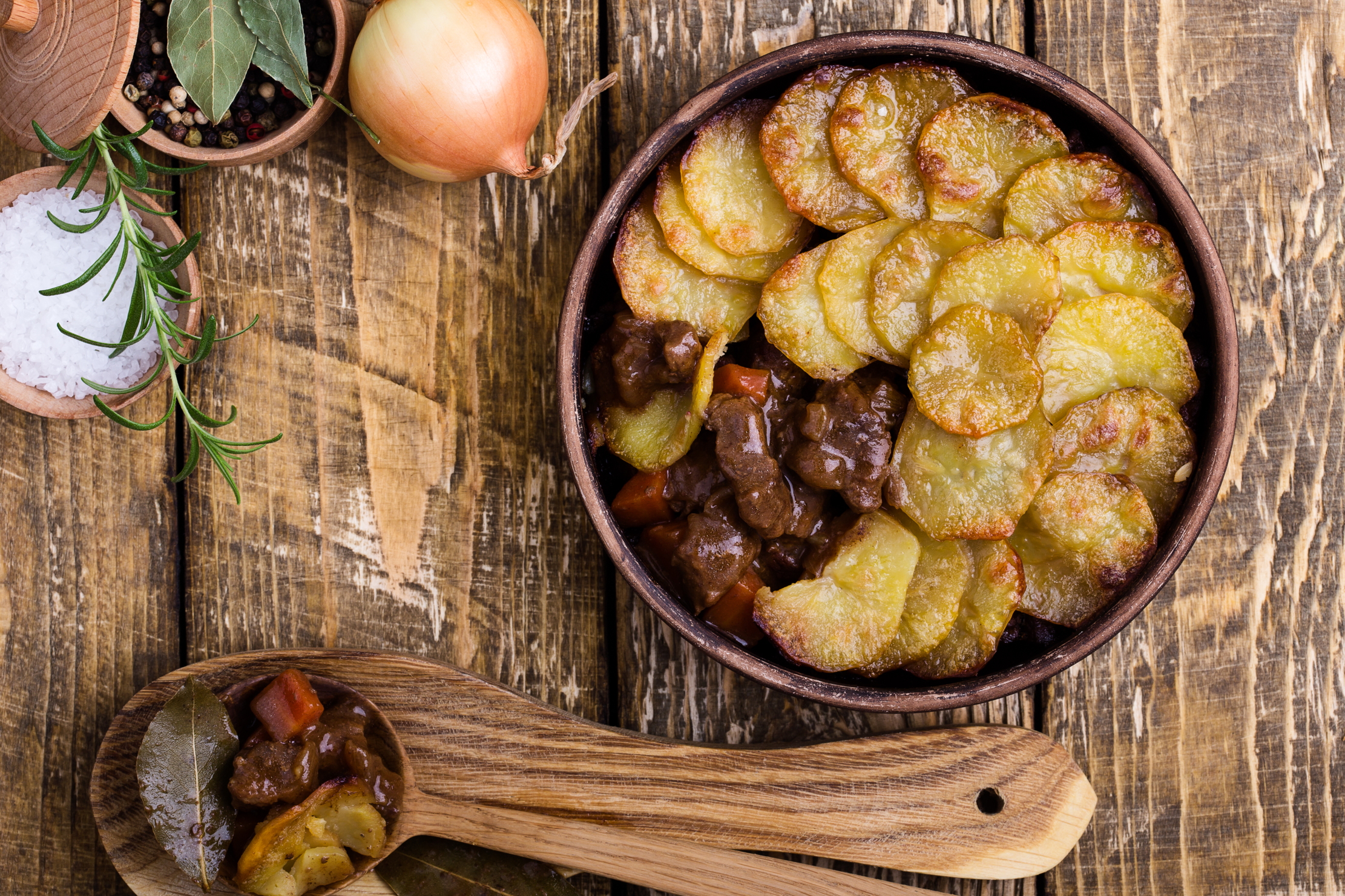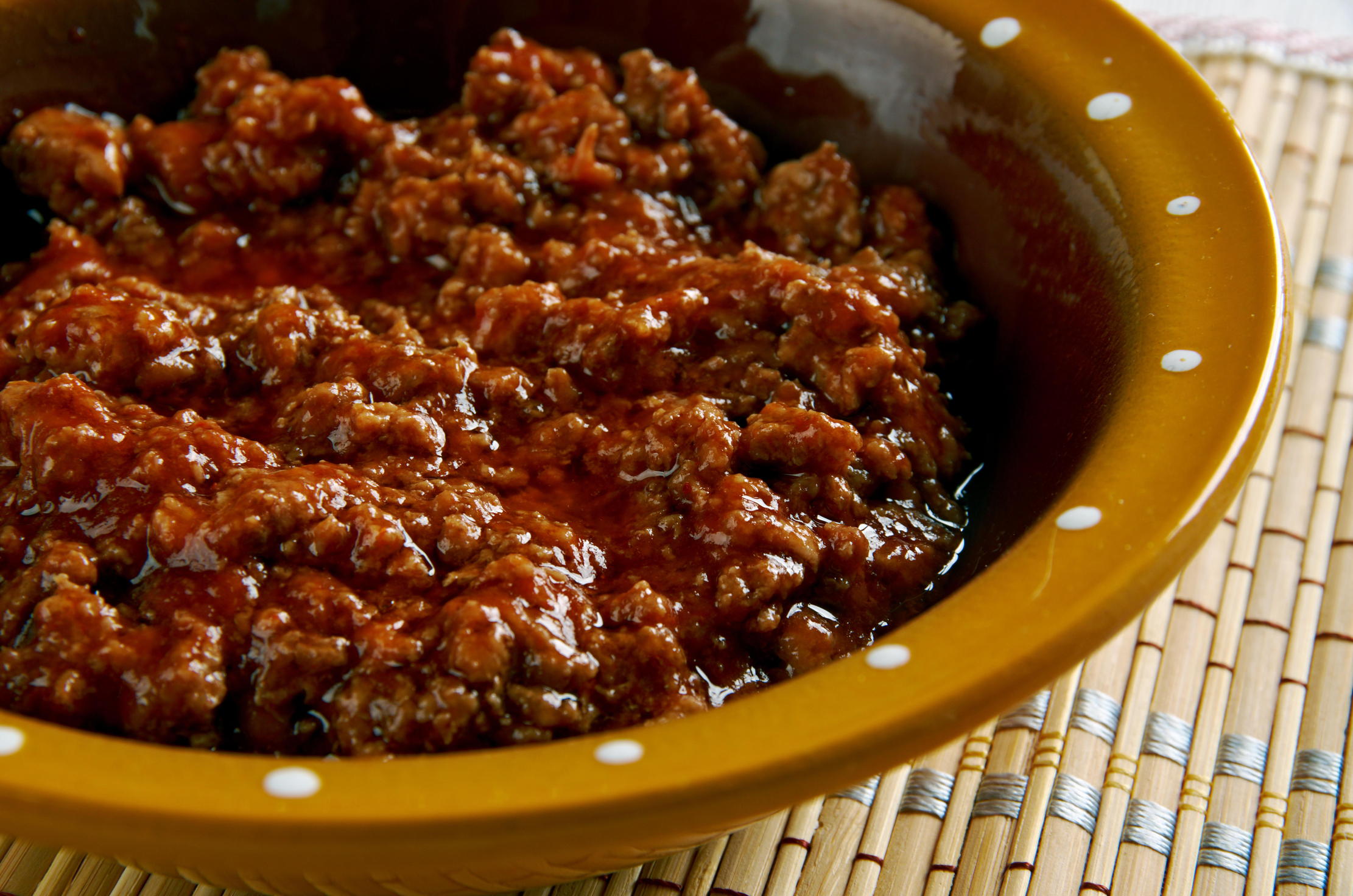Tom Parker Bowles: The Lancashire hotpot, a stew 'that's as straight talking as a Bolton costermonger after his third pint of Thwaites Gold'
A true Lancastrian legend, the hotpot – when made with tasty, slow-cooked mutton, a hearty gravy and topped with thinly sliced crispy potato – is the Henry V of stews.


There's something splendidly no nonsense about the Lancashire hotpot. It’s a stew that’s as straight talking as a Bolton costermonger after his third pint of Thwaites Gold, an ‘ow do, ey up cocker’ of a mouthful with little interest in the concerns of the bourgeoisie. The ingredients are as simple as they are satisfying: sheep, potatoes, onions and a good glug of stock. But the Devil, as ever, is in the detail.
Mutton is the traditional choice and quite rightly so. Far from being the tough, tallowy and aggressively ovine villain of popular legend — a hunk of saggy flesh to be enjoyed only by the gout-ridden, dyspeptic sadists of the Dickensian underworld — it’s simply a lamb that’s lived a little. Literally. Anyway, for those who still fear the M word, go for hogget, aged between one and two years old. They have far more flavour than their younger relatives and welcome a flash in the pan as much as a slow, comfortable stew. Peter Gott, at Sillfield Farm in Cumbria, is famed for his Herdwick beauties and the beasts from Swaledale in Yorkshire are mighty fine, too.
Chops are the preferred cut, with the bone being every bit as essential as the flesh. Some prefer cutlets (or the top of the best end) cut from the rib, with a good amount of tender loin attached. Being a soft southerner, you may expect me to also endorse them. But as wonderful as they are grilled, I find them a touch too delicate for this most robust of dishes. I far prefer the meatier, more intensely flavoured magic of the middle neck chop. Having done rather more work in their life, they’re better suited to slow cooking. Hotpot, however, is a forgiving dish, and happy with any of the tougher cuts.
Oysters were often added (back when they were cheap), with Florence White, in her wonderful Good Things in England, agreeing that ‘they are the correct thing in a real hot-pott’. They certainly add an elusively elegant depth. Kidneys, on the other hand, are less well suited. Not because I don’t adore these exquisite little organs. As if. When devilled on toast or smothered in a mustard sauce, I worship them with a passion verging on the deranged. Yet, hotpot is a slow-cooked dish and they turn, over the course of two or three hours, from tender morsels to mean, rubbery bullets. They’re best saved for more fitting culinary fates.
Dorothy Hartley, in Food in England, advocates the inclusion of carrots, but I feel their soggy sweetness detracts from the essential savoury grunt of the dish. She also advises ‘a drop of Yorkshire relish or a suspicion of anchovy sauce’, two additions I heartily applaud. As to the potatoes, they must be floury, to soak up all that lovely juice. You can build the dish in layer after layer of sliced spuds, chops and onion, lustily seasoning as you go. This is a recipe that really does need a generous hand with the salt and pepper. Or, if all that careful construction seems too much of a bore, simply spread the potatoes out on top.
Hotpot is traditionally cooked in a tall brown earthenware container, with straight sides and a fitted lid. Once ready, the whole thing would be wrapped in newspaper, then a blanket, and taken out to shoots or sheep-dog trials, where it remained ‘right hot’ for most of the day. Some claim that the dish was named after the vessel, although it does seem more likely that ‘hotpot’ is simply a descendant of ‘hotchpotch’ or ‘hodgepodge’, a rather older mixed meat and vegetable melange. In fact, hot pot was originally a drink, a steaming mixture of beer and brandy. Its modern usage was first coined in Elizabeth Gaskell’s North and South. An English classic within an English classic.
Regional variations abound. In Cumberland, stewing steak was added to ‘improve the gravy’, which is always a good thing. The Borders has its Tatie Pot, which includes slices of black pudding, and the Welsh Tatwy Rhost, which is a hotpot made with bacon. But really, there is only one true Lancastrian legend. All hail the Henry V of stews.
Sign up for the Country Life Newsletter
Exquisite houses, the beauty of Nature, and how to get the most from your life, straight to your inbox.
Eddie Holmes’s Lancashire Hotpot
This recipe is taken from Rhubarb & Black Pudding, written by that great Lancastrian chef Paul Heathcote, alongside that very fine writer and critic Matthew Fort. Published more than a quarter of a century ago, this is a genuine English cookbook classic, eternally elegant and excellent. Eddie Holmes was Heathcote’s Preston-based greengrocer. Serve the hotpot with ‘lashings’ of punchy, pickled red cabbage.
Ingredients
Serves 4
- 6-8 middle neck lamb chops
- 675g/1½lb potatoes, sliced
- 225g/8oz onions, sliced
- Salt and pepper
- 300ml/½pt chicken or lamb stock
- 30g/1oz dripping, melted
Method
Preheat the oven to 170˚C fan/190˚C/375˚F/gas mark 5. Trim any excess fat from the chops and fry them on both sides in their own fat for a few minutes.
In a suitable ovenproof pot, start layering potatoes, onions and chops, seasoning between each layer and finishing with a layer of potatoes. Pour over the stock and brush the potatoes with the melted dripping.
Cover with a lid or foil and bake in the oven for 2–2½ hours. Remove the lid or foil, increase the oven setting to 210˚Cfan/230˚C/450˚F/gas mark 8 and allow the potatoes to brown for a further 20–30 minutes.

Credit: Alamy
'Hotter than the hinges of hell': Tom Parker Bowles's 10-alarm chili
All will argue that theirs is the one-and-only true recipe, but when it comes to a Texas chili, tomatoes and
Tom Parker Bowles is food writer, critic and regular contributor to Country Life.
-
 ‘It had the air of an ex-rental, and that’s putting it politely’: How an antique dealer transformed a run-down Georgian house in Chatham Dockyards
‘It had the air of an ex-rental, and that’s putting it politely’: How an antique dealer transformed a run-down Georgian house in Chatham DockyardsAn antique dealer with an eye for colour has rescued an 18th-century house from years of neglect with the help of the team at Mylands.
By Arabella Youens
-
 You're having a giraffe: Country Life Quiz of the Day, April 25, 2025
You're having a giraffe: Country Life Quiz of the Day, April 25, 2025Friday's Quiz of the Day brings your opera, marathons and a Spanish landmark.
By Toby Keel